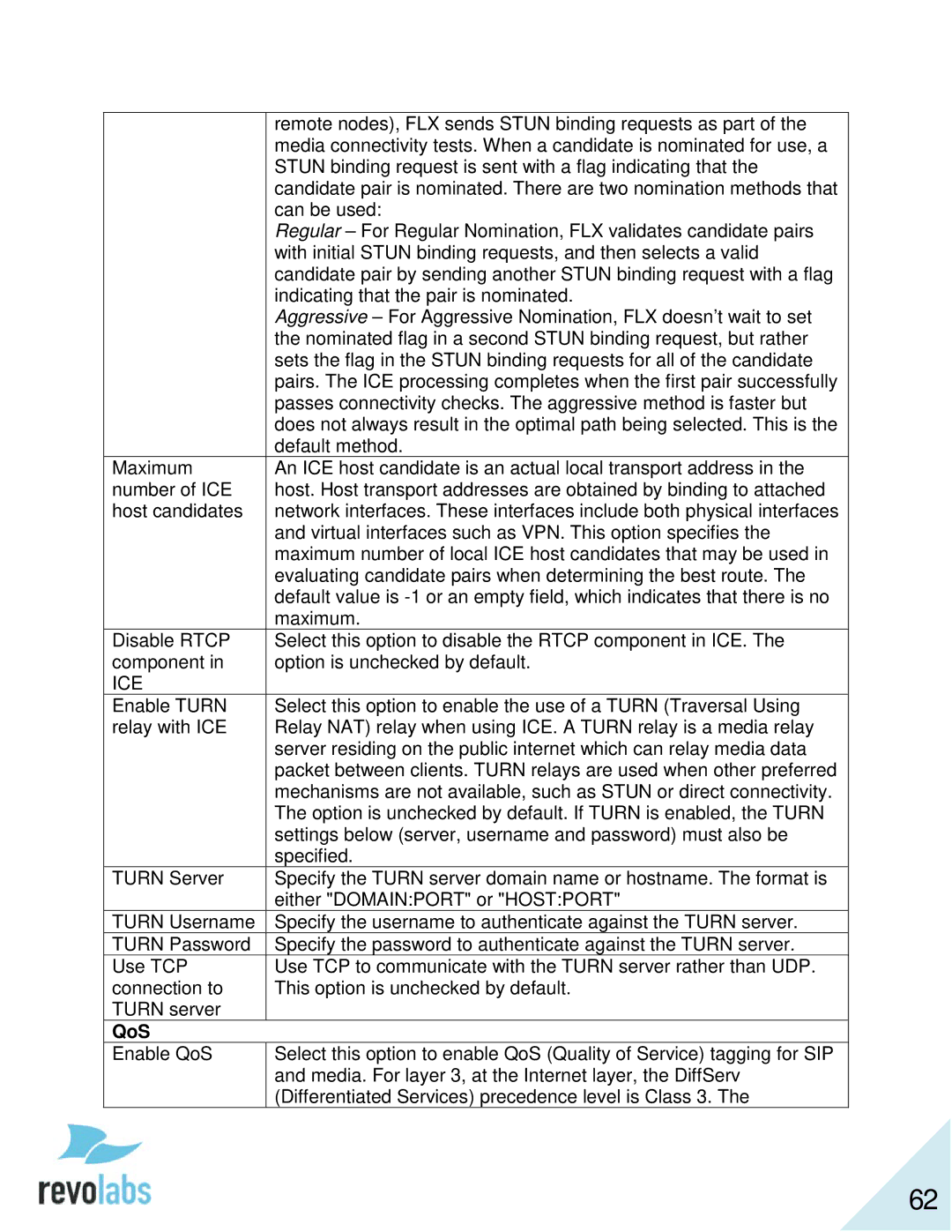
| remote nodes), FLX sends STUN binding requests as part of the |
| media connectivity tests. When a candidate is nominated for use, a |
| STUN binding request is sent with a flag indicating that the |
| candidate pair is nominated. There are two nomination methods that |
| can be used: |
| Regular – For Regular Nomination, FLX validates candidate pairs |
| with initial STUN binding requests, and then selects a valid |
| candidate pair by sending another STUN binding request with a flag |
| indicating that the pair is nominated. |
| Aggressive – For Aggressive Nomination, FLX doesn’t wait to set |
| the nominated flag in a second STUN binding request, but rather |
| sets the flag in the STUN binding requests for all of the candidate |
| pairs. The ICE processing completes when the first pair successfully |
| passes connectivity checks. The aggressive method is faster but |
| does not always result in the optimal path being selected. This is the |
| default method. |
Maximum | An ICE host candidate is an actual local transport address in the |
number of ICE | host. Host transport addresses are obtained by binding to attached |
host candidates | network interfaces. These interfaces include both physical interfaces |
| and virtual interfaces such as VPN. This option specifies the |
| maximum number of local ICE host candidates that may be used in |
| evaluating candidate pairs when determining the best route. The |
| default value is |
| maximum. |
Disable RTCP | Select this option to disable the RTCP component in ICE. The |
component in | option is unchecked by default. |
ICE |
|
Enable TURN | Select this option to enable the use of a TURN (Traversal Using |
relay with ICE | Relay NAT) relay when using ICE. A TURN relay is a media relay |
| server residing on the public internet which can relay media data |
| packet between clients. TURN relays are used when other preferred |
| mechanisms are not available, such as STUN or direct connectivity. |
| The option is unchecked by default. If TURN is enabled, the TURN |
| settings below (server, username and password) must also be |
| specified. |
TURN Server | Specify the TURN server domain name or hostname. The format is |
| either "DOMAIN:PORT" or "HOST:PORT" |
TURN Username | Specify the username to authenticate against the TURN server. |
TURN Password | Specify the password to authenticate against the TURN server. |
Use TCP | Use TCP to communicate with the TURN server rather than UDP. |
connection to | This option is unchecked by default. |
TURN server |
|
QoS |
|
Enable QoS | Select this option to enable QoS (Quality of Service) tagging for SIP |
| and media. For layer 3, at the Internet layer, the DiffServ |
| (Differentiated Services) precedence level is Class 3. The |
62
